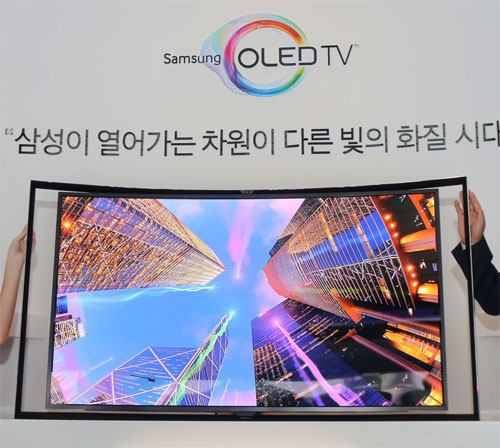If you’re wondering why Samsung’s OLED TVs are priced cheaper than those made by LG Electronics, well, you’re not the only one. According to the newly released AMOLED Process Roadmap Report from NPD DisplaySearch, whatever the reason for this price discrepancy, it seems that it doesn’t have anything to do with actual manufacturing costs, despite most people thinking that this would be one of the major factors that determine retail pricing.

NPD DisplaySearch’s newly published AMOLED report, which provides indepth data and analysis on OLED manufacturing technologies, comes to the somewhat surprising conclusion that Samsung’s OLED television manufacturing costs may be twice as high as those of LG.
The difference in production costs boils down to the fact that not all OLED displays are the same. LG, which beat Samsung to the post by launching its first commercially available OLEDs in Korea earlier this year, uses a technology known as WOLED (White OLED with colour filters), for which the average price of one display comes to $3,600 (around £2,250). Meanwhile Samsung uses an altogether different technology, called RGB (Red, Green and Blue) OLED, for which the average cost of manufacturing one unit soars to a whopping $7,300 (approximately £4,550).
Neither technology is especially cheap, yet the difference in production cost is evident. So why is it that Samsung’s curved OLED TV is available for just €7,999 in Germany, compared to €8,999 for LG’s similar effort? Could it be that LG is just too damn greedy? Or is it because Samsung is so desperate to beat its rival that its prepared to sell its new TVs with virtually no profit margin whatsoever?
The answer isn’t immediately clear, but what we do know is that for a long, long time, Samsung has been playing catch-up in the OLED race. LG achieved a major coup when it launched its own OLED HDTV several months ahead of its rival, and has previously stated that its OLED technology is at least two years ahead of Samsung’s. That’s not to say that LG’s OLED technology is superior to Samsung’s, but when it comes to costs and production yields the former is definitely one step ahead.
Or at least, that was the case. But could it be that LG/NPD’s claims are now outdated? It was only three weeks ago that Samsung hit the headlines by slashing a massive $6,000 off the price tag of its curved OLED TVs in the USA, and at the time it justified this move by saying it had made “significant improvements” in its OLED production yields, even though these claims were questioned.
Most likely, it’s something in between. Samsung is probably getting better at making OLED panels for less, but at the same time it may have decided to take a knock on its profit margins too, simply because it can’t afford to let LG take an early lead in a sector that both brands believe will ultimately prevail over 4K Ultra HD technology.
Source: NPD DisplaySearch – thanks to David Katzmaier for the heads-up.